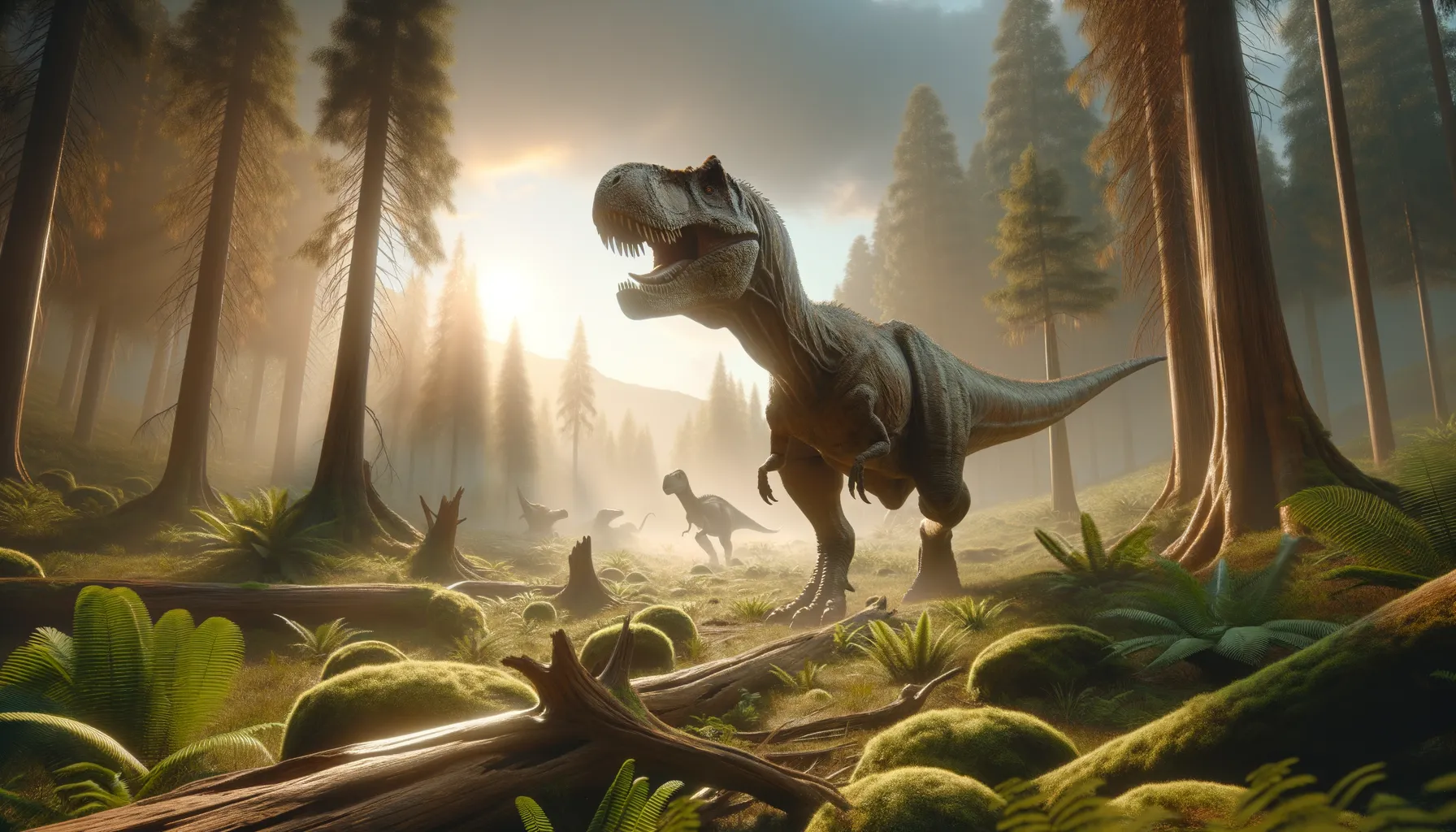
Prodeinodon
A mysterious predator from the Cretaceous.
Period
Cretaceous
Length
Its length could reach up to 7 meters.
Height
Specific height measurements are not available.
Weight
Estimated to weigh between 500 and 1000 kilograms.
Prodeinodon is a poorly known dinosaur genus that lived during the Cretaceous period. The genus is primarily identified through fossil teeth, making it challenging to understand its exact physical features and behavior. Due to the fragmentary nature of its remains, scientists are still uncertain about many aspects of its life, including its diet, habitat, and social structures. Further discoveries might yet shed more light on this enigmatic creature.
Diet
Prodeinodon likely had a carnivorous diet due to its sharp teeth. It might have preyed on smaller dinosaurs or scavenged, but exact details are unclear.
Hunting
Lacking complete fossil evidence, its hunting behavior is speculative. It could have been a solitary hunter or part of a pack, depending on other environmental factors. Its sharp teeth suggest it was equipped for a predatory lifestyle.
Environmental challenges
During the Cretaceous period, Prodeinodon would have faced a variety of environmental challenges such as changing climates and volcanic activity. Competition for resources with other predators might have been a significant challenge. Additionally, survival strategies would have been essential in adapting to the predatory-prey dynamics in its ecosystem.
Speed
Its speed remains largely unknown due to limited fossil evidence.
Lifespan
The lifespan of Prodeinodon is not well-documented.
First discovery
First discovered in the early 20th century in Mongolia.
Fun Facts
- Prodeinodon is a theropod dinosaur that lived during the Early Cretaceous period, around 125 million years ago.
- Fossils of Prodeinodon were first discovered in China, highlighting the rich dinosaur history of the region.
- Its name, Prodeinodon, means 'before terrible tooth,' inspired by its early discovery relative to other large theropods.
- Prodeinodon is known mostly from teeth, which can make it challenging to reconstruct its full appearance and lifestyle.
- While not much is known about its size, Prodeinodon is believed to have been a carnivore due to the sharp, serrated edges of its teeth.
- Prodeinodon lived alongside other interesting Early Cretaceous dinosaurs, adding to the diverse ecosystem of the time.
- It is often grouped with other basal theropods that shared similar physical characteristics and timeframes.
Growth and Development
Without much fossil evidence, understanding its growth remains a challenge. Prodeinodon would likely have gone through similar stages of development as other theropods. Juveniles would have required protection from predators until reaching maturity. Rapid growth might have been necessary to reach a size that could defend itself effectively.
Habitat
The exact habitat of Prodeinodon remains speculative, though it likely lived in a range that included forests and plains. This environment would have provided both ample prey and cover. The variety of ecosystems during the Cretaceous would have influenced its adaptations and lifestyle.
Interaction with other species
Prodeinodon might have interacted with various species, including its potential prey and competitors. Its sharp teeth indicate a predator role, which would place it in direct competition with other carnivores. There might have also been complex relationships with scavengers that fed on similar food sources.
Natural lifespan
Lack of data makes its natural lifespan hard to determine precisely.
Reproduction
Like other theropods, Prodeinodon probably reproduced by laying eggs. The nature of their nesting behavior remains unknown. Parental care levels could vary widely, akin to other similar dinosaurs.
Social behaviour
Its social behavior is speculative, with little evidence indicating whether it was solitary or social. If it was a pack hunter, it might have exhibited coordinated group hunting strategies. Alternatively, it could have maintained solitary territories.
Fossil locations
Fossils attributed to Prodeinodon have been found in Mongolia. These discoveries are primarily dental remains, hindering the ability to fully reconstruct its lifestyle. More discoveries could provide clearer insights into its existence.
